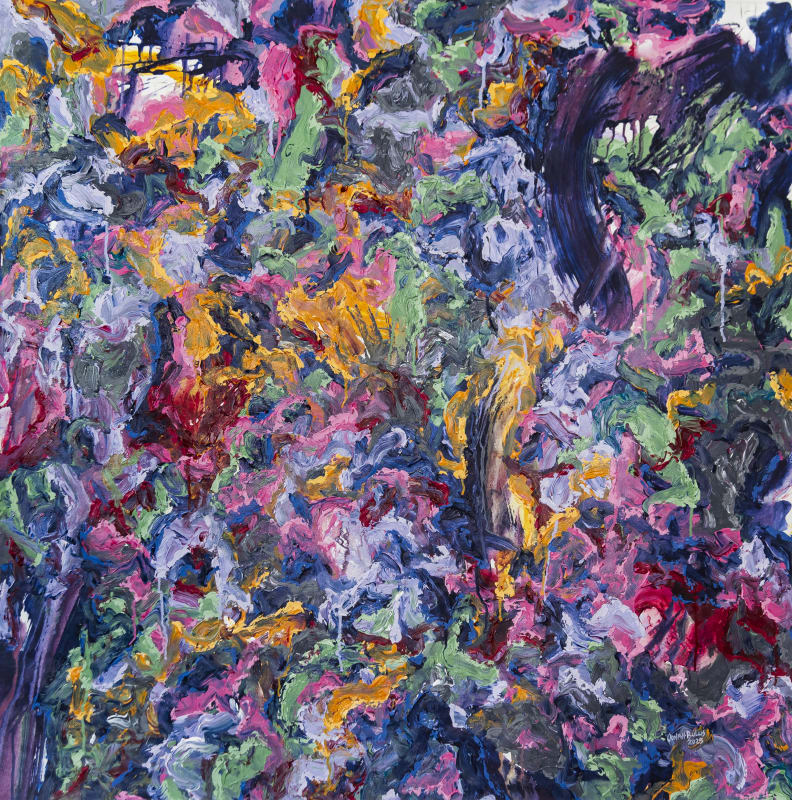This is one moment
But know that another
Shall pierce you with a sudden painful joy
T.S. Eliot ( 1888-1965)
In his treatise On Rhetoric, the ancient Greek philosopher Aristotle (384-322BC), identified three artistic modes of communication. Ethos the first, refers to the speaker’s character, Logos alludes to the content of his argument and Pathos /passion/ the third, infers his ability to appeal to the emotions of his audience. Through his expansive painterly offerings, Bulus meditates on the latter. Applying elegant strokes that take poetic shape on canvas, he locates a place of feeling and gives language to it.
Imagine a policeman with one bullet to subdue his adversary, fear a palpable taste on his tongue. A groom prone to hedonism, grappling with the actualities of loving for eternity. A child dressed in their Christmas best, oblivious of a parent’s sacrifice. A tamarind sapling after the rainy season, its head gently tilting towards the sun. Hidden within collisions of pigment are manifold sentiments. They form a confluence with that which cannot be named but are no less felt.
It may appear that Bulus has conjured a dreamlike realm, in which encounters
transition from light and paradisiacal to dark and brooding, but that is only partly true. Each artwork moves beyond straightforward dichotomies to encompass moral and temporal simultaneity. The artist intends for his audience to experience the paintings not as a private hieroglyph, but as a connection across time, to the ways we have found happiness and lost it, exercised moral superiority, only to lose our way and been in seemingly inconsolable pain, yet survived.
Pathos is a bittersweet equation, the sum of which are the sublime and grievous aspects of the human experience.
The collection is enhanced by a soundtrack of fourteen compositions, opening with Pathos by maestro Ludovico Einaudi and ending with Lullaby by the father of Nigerian art composition, Fola Sowande ( 1905-1987)
- Asibi Danjuma

